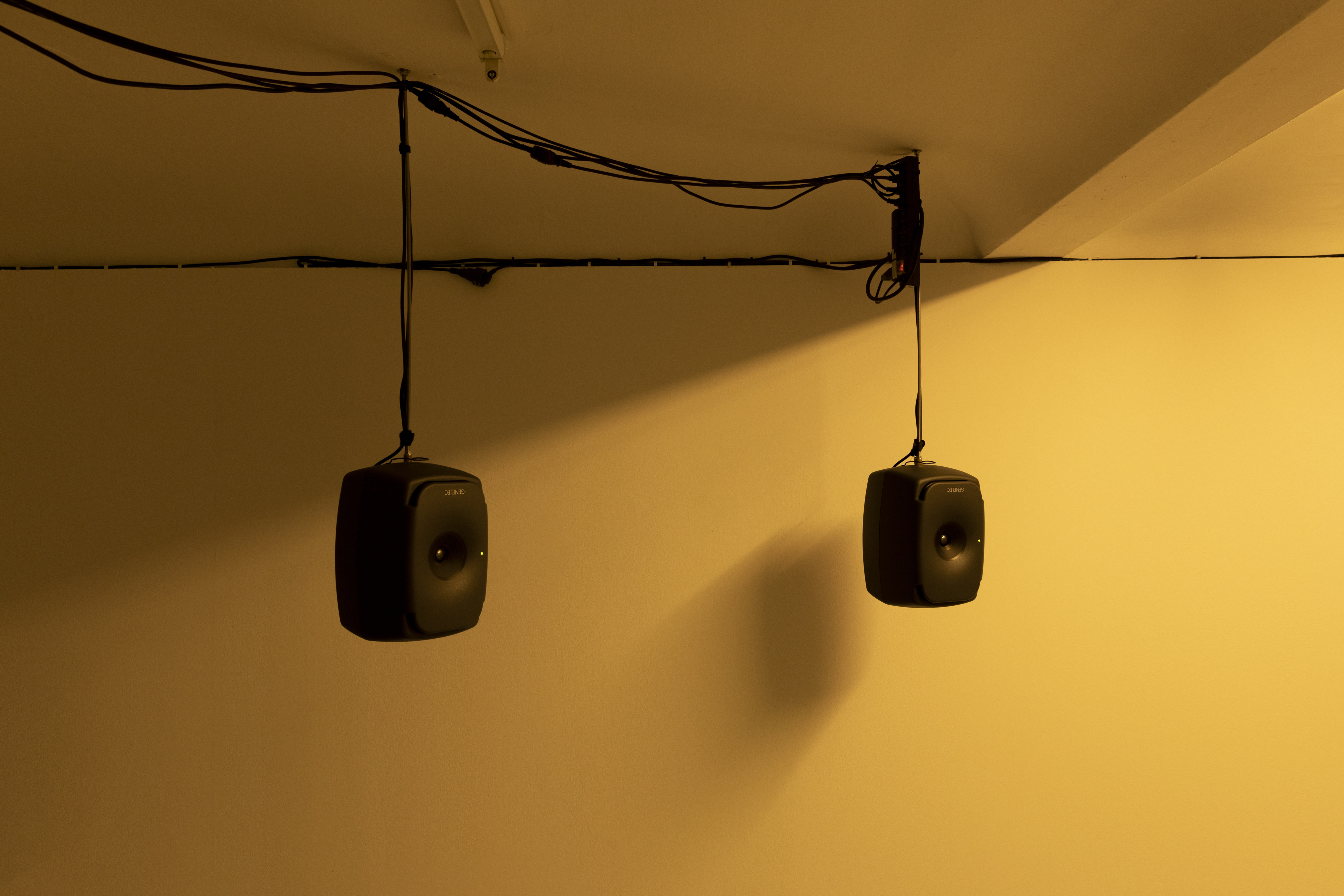There is a Point at Which Methods Devour Themselves (2020)
8-channel Ambisonics sound installation. Commissioned by the Max-Planck Institute for Empirical Aesthetics. Based on “Balada do Filho Pródigo” (1989) by Elomar Figueira Mello, re-interpreted by Aimilia Varanaki. Length: 3:34.
Text by Marie Thompson:
“In There is a Point at Which Methods Devour Themselves, the listener encounters a voice singing of home, inflected with glitches and distortions. These noises – or noise artefacts – are not simply a layer of additional sounds, nor do they merely interrupt. Rather, they transform the singing voice, creating textural and timbral difference. Indeed, it is hard to tell where noise ends and the voice begins. They are neither heard as a cohesive whole, nor two autonomous auditory elements.
The noise artefacts audible in the song gestures towards its origins. They are remainders and reminders of Oliveira’s creative process, which involves the deconstruction and reconstruction of the recorded voice. This noise is not brought in but drawn out: There is a Point… amplifies, extends and foregrounds the noise that is within the techno-aesthetic system. The medium – the material means of communication, relation and transmission – always leaves an impression. Indeed, the necessity of noise to mediation means that as listeners and as viewers, we may overlook or overhear it. As Greg Hainge has highlighted, noise is often difficult to recognise in the present: old digital photographs may look noisy to some current eyes, certainly by comparison to contemporary high resolution images. However, when these older images were cutting edge or even mainstream, they would have appeared ‘clear’. The ability to recognise noise and its effects, then, is not just predicated on subjectivity but positionality.
Likewise, the noise of There is a point… is not perceptible to all. Noise often arises in translation – the shift from one medium, or means of mediation, to another. The song around which the work revolves is in Portuguese. The deconstructed and reconstructed voice is that of a singer with no knowledge of the language, and who has learnt the words by ear. There is an opacity to the song’s meaning.

All voices are noisy – such is their reliance on the throat, the mouth, the tongue and other mediating technologies. But some are heard as noisier than others. Noise also gestures towards the conceptual underpinnings of There is a Point at Which Methods Devour Themselves. The piece is a response to Germany’s use of so-called ‘accent recognition’ software as a means of verifying asylum seeker’s place of origin. These violent exercises in machine listening rely on a carefully policed boundary between anticipated and unexpected noise. If accents can be understood as a kind of noise artefact, an auditory consequence of the enduring impressions of place, environment, sociality and body, ‘accent recognition’ software is an attempt to stabilize and categorise these artefacts. Those of us whose accents are ambiguous, who have moved around, or who carry the impressions of different voices and tongues, may fail to register.”

“I leave methods to the botanists and the mathematicians. There is a point at which methods devour themselves. I should like to start from there.”
– Frantz Fanon, “Black Skin, White Masks” (1952)
Photos by Katrin Binner / basis e.V.